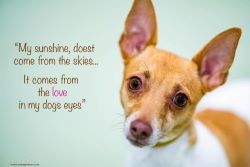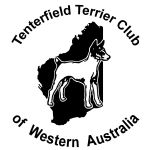Characteristics

Average Life Span
The Tenterfield Terrier is well known for its lengthy lifespan. It is not unusual for these dogs to live to between 12-17 years of age.
Average Size and Weight
The height at the shoulder is ideally 28 cm (11 inches) with a 2.5 cm (1 inch) variation either way. The weight to be in proportion to the size of the dog.
Temperament
The Tenterfield Terrier is a strong, very intelligent, active, agile working terrier of great versatility. He has proven himself as a hunter of vermin and of being an extremely loving and loyal pet. The Tenterfield Terrier is at home whether hunting mice on the land or around the home or curled up on a loving knee in front of a fire. He is an ideal companion for both children and the elderly alike.
Care Requirements
The Tenterfield Terrier is a simple wash and wear dog. They need very little upkeep other than trimming their nails, keeping their teeth clean (as with any breed) and an occasional brushing to remove loose hair (especially when dropping summer and winter coats).
Compatibility
The Tenterfield Terrier is very amicable with other pets and is often used as a companion dog for larger breeds. They can become the best of friends with the family cat when introduced as a puppy. They get along very well with other Tenterfield Terriers, even when running in a pack. The Tenterfield Terrier is a true terrier in temperament and therefore will not hesitate to 'stand up for himself' should he feel threatened.
Background
The forefathers of the Tenterfield Terrier originated in England. The fox hunters back in the day found they needed to develop a small dog of great agility that was able to go to ground to chase out foxes from their dens and then be able to leap into the saddlebags on the horse to pursue the chase with the hounds.
The early settlers of Australia brought out the forebears of the Tenterfield Terrier as a working dog for vermin. As well as fox hunting, the breed had been used widely throughout England and Australia for ratting and rabbiting. Over the next hundred or so years the breed became established in Australia as a working terrier and family companion. There was hardly a farm in Australia that did not have at least one of these terriers. The breed was developed in Australia to the type it is today - a true Aussie.
